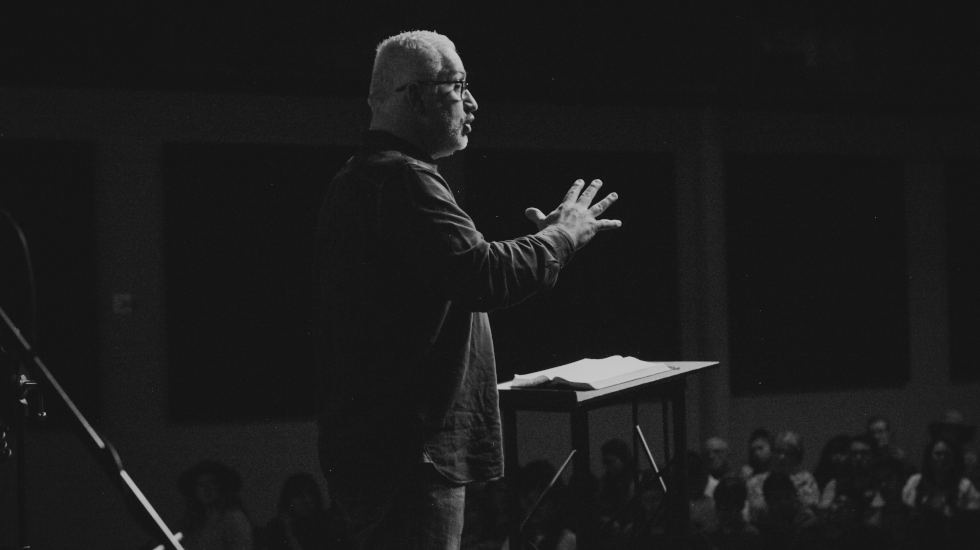Take any introductory course to preaching and I can almost guarantee that you will learn about the three functional elements of preaching. They may not be called by that title, but you will learn that all sermons should include these elements in various levels and degrees, all depending on the nature of your sermon and your text. They are functional elements because this is what sermons by their nature do.
The Functional Elements of Preaching
First, your sermon should include (and probably mostly consist of) explanation, walking through your text by explaining what it meant to its original hearers. This will include all your exegetical work through the structure and the meaning of the text. Second, your sermon should include illustration, providing parallels in something easier to understand in order to shed light on your text. Spurgeon uses the analogy of putting windows on a house. Houses need windows to bring light inside but shouldn’t compromise the structural integrity of the house by being all glass.[1] And finally, your sermon should include application, building a bridge from the world of the text to the world of your audience.[2] Now that you know what this text meant to its original readers, how does it fit into the lives of your congregation? The three functional elements were introduced to the homiletical world by John Broadus in his Treatise on the Preparation and Delivery of Sermons.[3] Interestingly, although homiletics classes teach these three functions given to us by Broadus, they often do not include his fourth: argumentation.[4]
The Case for Argument
Broadus included argument as a function of preaching because preaching is persuasion, and the preacher’s audience needs to be persuaded of something. That something can be the truth of the passage or of the gospel itself.[5] In many ways, Treatise is a merging of the fields of rhetoric and homiletics, so Broadus shows how to argue in a sermon in the same manner that a lawyer would in court.[6] The mechanics Broadus offers on how to accomplish this may not be as helpful for a preacher committed to staying close to his text, but the idea of making an argument, I believe, can still be helpful.
Broadus recognizes that there are those in our audience who will not be as easily moved by emotional appeals; we will need to engage their intellect through logical reasoning. If they are believers who assume the truthfulness of Scripture, we may need to show them the reasonableness of our interpretation. If they are unbelievers who assume the falsity of our very faith, then we will need to defend our beliefs and show the reasonableness of the faith.[7]
This may seem like a tall order, especially to those of us who have a commitment to expository preaching. If we want to stick as close to the text as possible, time spent making an argument takes time away from doing something else. We only have so much time on a Sunday to preach, after all. If the power of preaching resides in the word of God, then why try to convince my people of something? Wouldn’t my time be better served staying in the text and letting the word do its work? I believe there is a way to incorporate argument into our preaching without sacrificing the text in the process.
Practical Suggestions
First, get to know your people. Spend time with them. Start to piece together their concerns, doubts, and struggles in the faith. Broadus makes the claim, “Yet in preaching we need not act as if everything had to be proved. Some things cannot be proved; some do not need to be, and others have been sufficiently proved before, and should now be taken for granted.”[1] By getting to know your people and where their hang-ups with Scripture are, you know what they already accept and what they may need more convincing on. This will allow you to make pastoral decisions on what to argue. For instance, if your congregation accepts the inspiration of Scripture but has a hard time with perseverance of the saints, spend your precious sermon time arguing for the latter.
Second, pick apart the grammar of your text. In my experience, church members often have a hard time accepting details of a text. As a result, they get lost in the forest by focusing on the trees. (And by the way, this isn’t a problem with just the laity either.) Having the grammar of the text in your mind, able to discern the major and secondary thoughts, allows you to shift back to the focus of the text and have biblical and grammatical reasons for doing so. Recently, I did this in the Men’s Bible Study I teach on Wednesday nights. This group likes to have theological discussions on how predestination and election square with responsibility and free will. I knew they would have a field day while we walk through Ephesians 1:3–14. By arguing that the grammar of the text focuses on blessings available in Christ, I was able to keep conversation on Paul’s focus: what is available for those in Christ, not the secret decrees of God’s will.
Third, pinpoint touchy areas of apologetics. Pastorally, this is part of your responsibility. Whether it’s the exclusivity of the gospel, the eternality of hell, the destruction of the Canaanites, or why Paul doesn’t dismantle the institution of slavery in Philemon, your people will struggle with something. There’s no way around it: you’re going to need to clear some space and deal with the reality of their struggle. And that will include constructing an argument to address their concerns.
Each of these suggestions, though, concerns itself with what is warranted by the text. You don’t need to construct an oratorical masterpiece; just deal with the issues that are in the text. As you prepare for your sermon, work into your outline places to explain, places to illustrate, and places to apply. You may not need to do this each time, but look for places to argue as well.
[1] Charles Haddon Spurgeon, The Art of Illustration: Being Addresses Delivered to the Students of The Pastor’s College, Metropolitan Tabernacle, third series of Lectures to My Students, reprint (Lynchburg, VA: The Old-Time Gospel Hour, n.d.), 2.
[2] See John Stott, “Preaching as Bridge-building,” in Between Two Worlds (Grand Rapids, MI: Eerdmans, 1982), 135–79.
[3] Kyle Walker, “The History of Expository Preaching: Part 3 | Broadus to Present Day,” Preaching Source, http://preachingsource.com/blog/the-history-of-expository-preaching-part-3-broadus-to-present-day/, accessed September 30, 2019. Although numerous editions of Treatise exist, I would encourage the reader to invest in Broadus, A Treatise on the Preparation and Delivery of Sermons (Charleston, SC: Bibliobazaar, 2010).
[4] By argumentation and argument I don’t mean being belligerent or talking down to your congregation. What I do mean is making a reasonable case for something through the use of evidence and proofs.
[5] Broadus, Treatise, 158.
[6] Broadus, Treatise, 162–213.
[7] Broadus, Treatise, 158–59.



